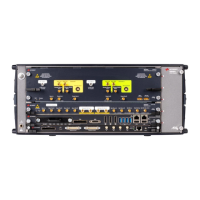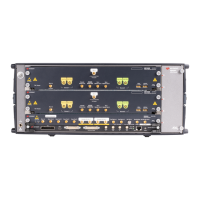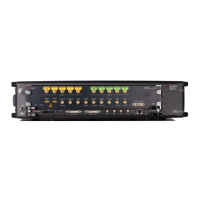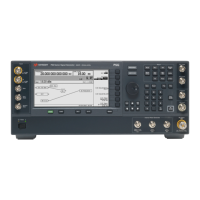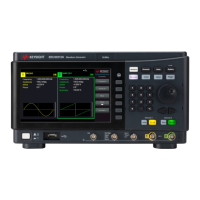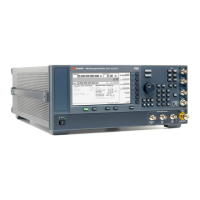84
Chapter 4 Calibration Procedures
Low Frequency Flatness Adjustment
4
Low Frequency Flatness Adjustment
The Low Frequency Flatness adjustment calculates the flatness response
of 3 attenuator paths with the Elliptical filter and 2 attenuator paths
with the Linear Phase filter.
1 Set the DMM to measure Vrms. Make the connections shown on page 81.
2 Use the DMM to measure the output voltage for each of the setups in the
table below.
* Constants are stored after completing this setup.
3 Using the numeric keypad or knob, adjust the displayed voltage at each setup
to match the measured voltage. Select ENTER VALUE.
4 After performing setup 38:
a. If your calibration procedures require you to verify the adjustment
just made, exit the calibration menu and perform “Low Frequency
Flatness Verification”, on page 64.
b. If you are making all the adjustments and then verifying the
instrument’s performance, continue with the next procedure in
this chapter.
Nominal Signal
Setup Frequency Amplitude
29* 1 kHz 0.56 Vrms Flatness for 0dB, Elliptical Filter
30* 100 kHz 0.56 Vrms Flatness for 0dB, Elliptical Filter
31* 1 kHz 0.56 Vrms Flatness for 0dB, Linear Phase Filter
32* 100 kHz 0.56 Vrms Flatness for 0dB, Linear Phase Filter
33* 1 kHz 1.7 Vrms Flatness for +10dB, Elliptical Filter
34* 100 kHz 1.7 Vrms Flatness for +10dB, Elliptical Filter
35* 1 kHz 5.6 Vrms Flatness for +20dB, Elliptical Filter
36* 100 kHz 5.6 Vrms Flatness for +20dB, Elliptical Filter
37* 1 kHz 5.6 Vrms Flatness for +20dB, Linear Phase Filter
38* 100 kHz 5.6 Vrms Flatness for +20dB, Linear Phase Filter
